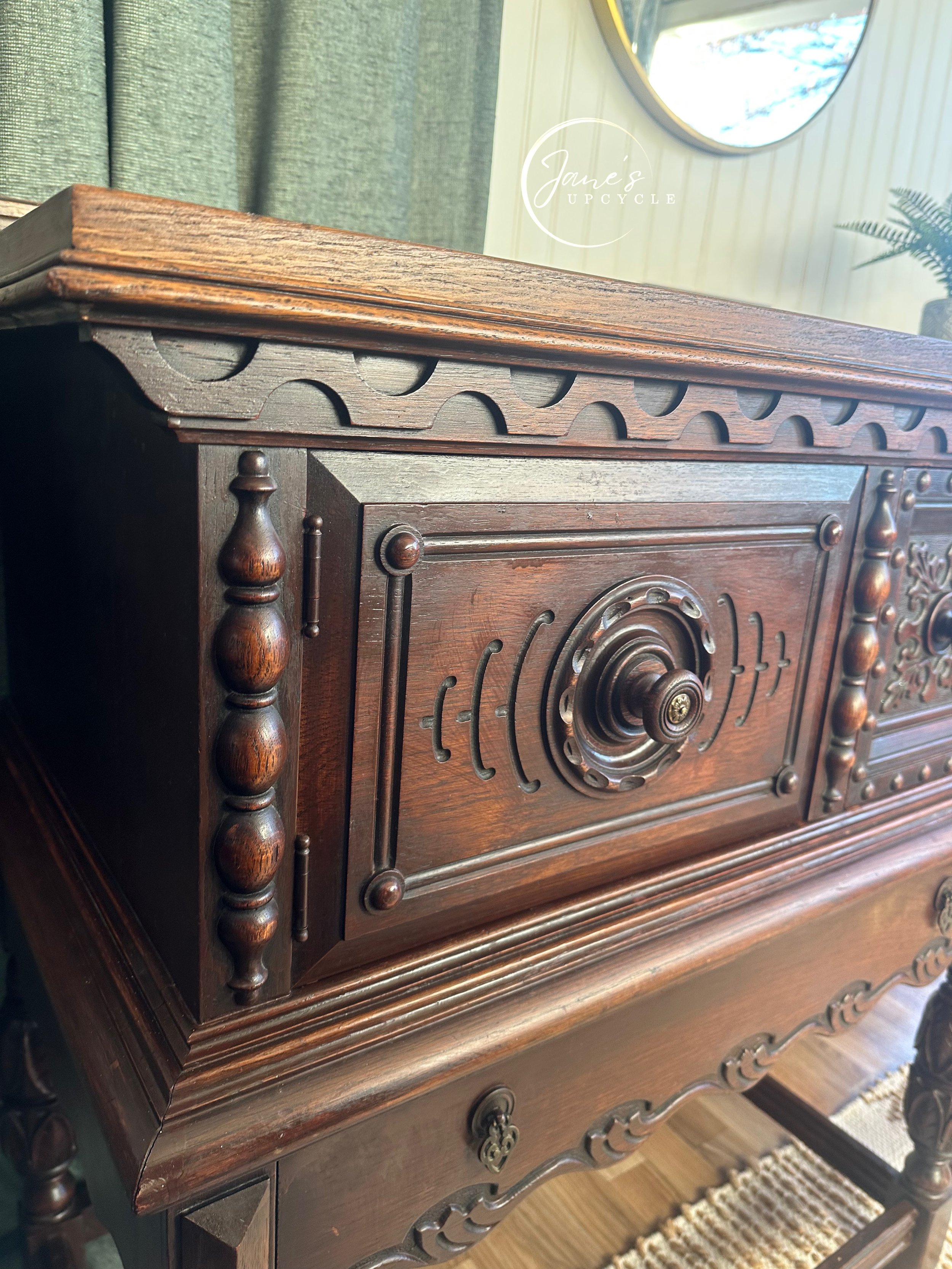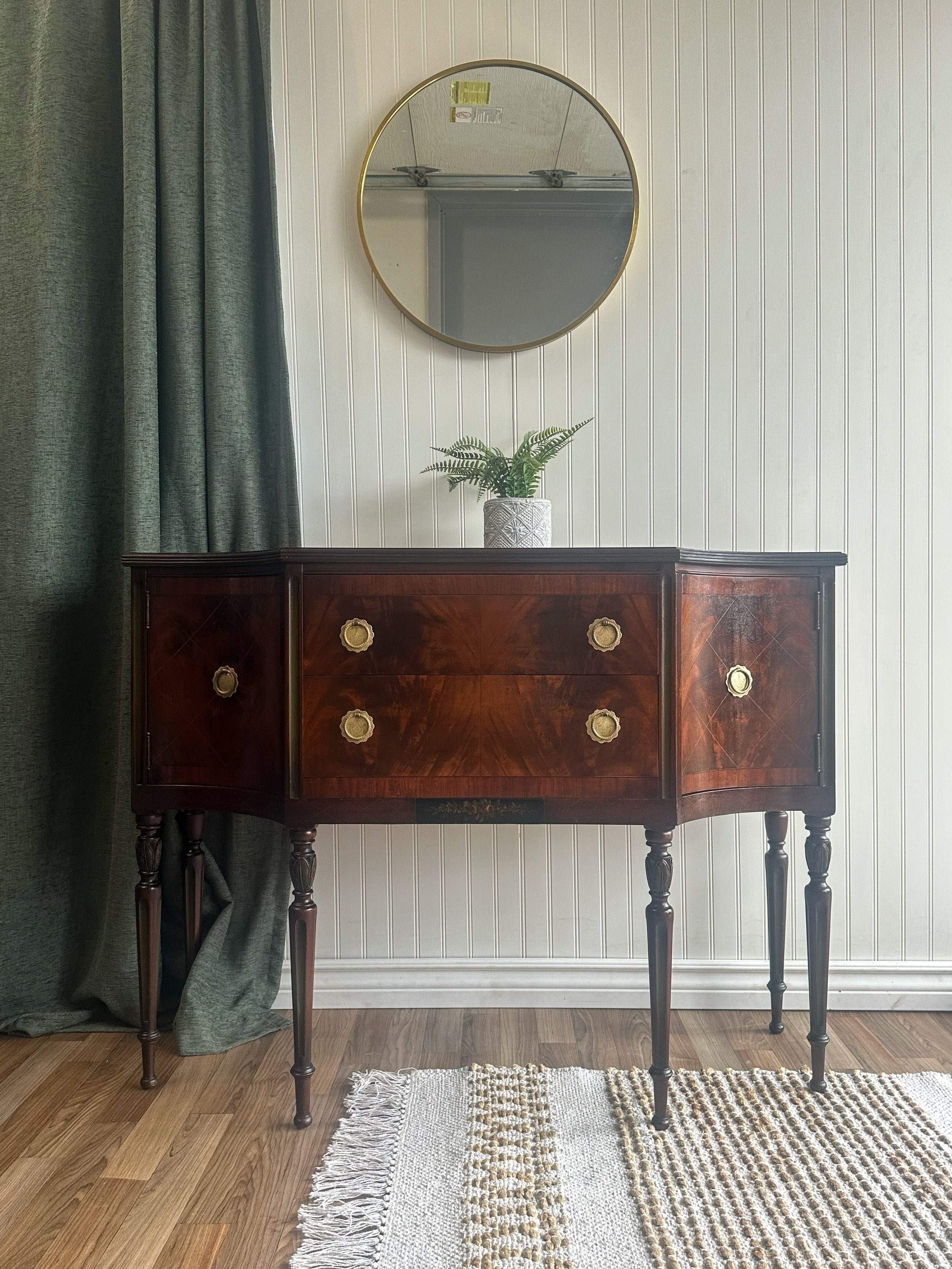Spanish Revival Carved Oak Sideboard
Spanish 19th-century furniture reflects a period of significant stylistic evolution, marked by the shift from Neoclassical design to Romanticism. Early in the century, Neoclassical influences were still present, with symmetrical shapes and elegant lines. As Romanticism took hold, Spanish furniture became more expressive, focusing on comfort, grandeur, and intricate ornamentation. This era also saw the influence of the Biedermeier style, which embraced a simpler elegance with functional designs that still showcased refined details. Despite the rise of industrial production, Spanish craftsmanship remained rooted in hand-carving and the use of rich, durable woods like oak, walnut, and mahogany. A perfect example of 19th-century Spanish craftsmanship is a carved oak sideboard. This piece blends practicality and ornate design. It features two cabinets on either side, a central large drawer, and two smaller drawers below, offering ample storage space. The oak finish, known for its durability and rich color, is complemented by detailed carvings, likely influenced by Romantic and Biedermeier styles. Over time, the wood has developed a patina that adds depth and character, making this sideboard both a functional storage piece and a statement of the era’s dedication to craftsmanship and beauty. Top was refinished. Measuring 66 inches in width, 20 inches in depth, and 41 inches in height.






